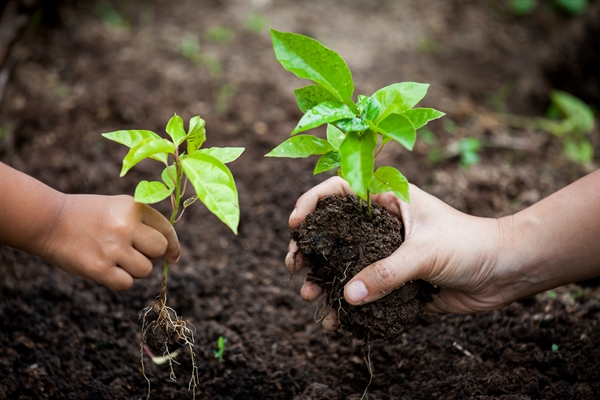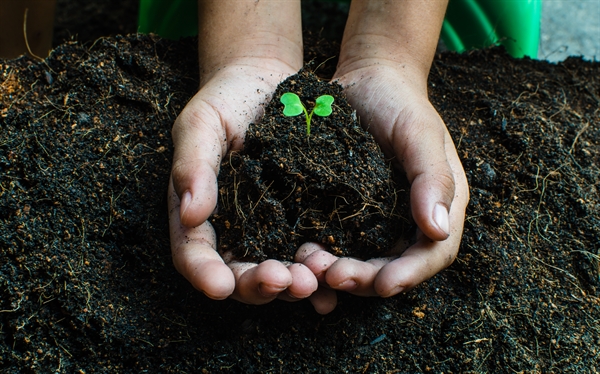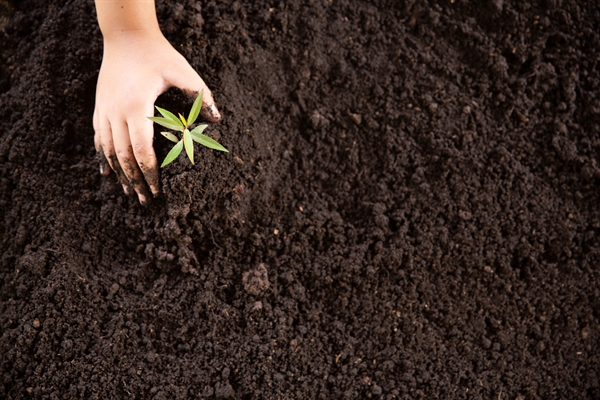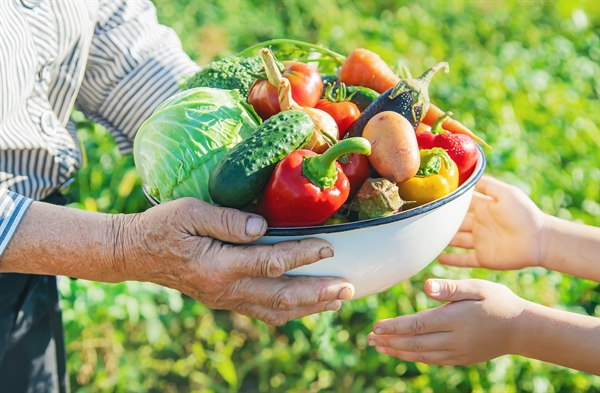

In 1810, Charlie Zuniga and Matthew Odonnell Learned About Grass Clippings In Garden
Grass specialists frequently recommend “topdressing” lawns with a thin layer of garden compost. The material is spread one-quarter to one-half inch thick in spring or fall, depending on local climate and soil. * Garden compost improves the moisture-holding capability of the soil, includes nutrients, and feeds soil microorganisms. These microorganisms are crucial to the complex process that makes food available to grass plants.
Compost spread on top of thatch can likewise speed thatch decay and eliminate the labor of mechanical removal. But there is a problem: Compost quality varies. Whether you purchase it by the bag, pick it up at the community leaf dump or have it provided by the backyard, how can you understand that it is “excellent” compost? Think about these questions: Is it at the ended up stage?Does it contain unwanted components such as dyes or constructing materials?Are there viable weed seeds in the material?Could it have pesticide residues? The parent materials and the composting process both affect the quality of the end product.
” That is to use garden compost that has actually gone through compost-specific testing.” Recognizing the issue this creates for customers and the land care market alike, the USCC began the Seal of Testing Guarantee (STA) in 2000. STA is a testing, labeling, and disclosure program designed to bring presence into the world of compost sales.
STA takes a look at 14 compost characteristics consisting of natural matter, salts, p H, significant nutrients, pathogens, metals, stability, and maturity. Rattie states one of the biggest concerns is the existence of pesticide residuals. Well-crafted compost, nevertheless, carries little of this threat. “An appropriate composting system ruins the frustrating majority of pesticides and herbicides,” states Rattie.
” The majority of STA participants offer wholesale through local landscape supply backyards, garden centers, and through direct sales,” states Rattie. USCC provides a number of resources to find STA garden compost and a calculator to help figure out the quantity: Find a list of 200+ STA individuals Visit Buy Compost.com and use the USCC’s garden compost calculator on the upper right of the homepage.
” Bagged garden compost materials just one cubic foot of material,” he says. “It takes 27 bags to get one cubic yard. Do the mathematics!” When we used the compost calculator offered by the USCC at Buy Compost.com, we discovered that a one-quarter inch layer on a quarter-acre yard (10,000 square feet) needs 7.7 cubic lawns or 5.9 cubic meters of garden compost.

” Golf course and ball field superintendents having been utilizing this method successfully for several years,” he says. Compost is spread out in spring or fall, but there are essential subtleties. In cool-season areas, the spring application is normally lighter and the fall application much heavier. In the south, topdress warm-season yards in early spring.
Simply put, compost is disintegrated organic matter but that doesn’t explain much. To a romantic, garden compost is the extremely essence of life. The living element of the soil accountable for a myriad of the most superb and intricate processes known to guy. Organisms nourishing organisms all the method up the food cycle from basic bacterium to crops to human beings, none of it possible without decayed raw material: compost.
In Neptune, NJ, Patience Rice and Seamus Pitts Learned About Can You Use Grass Clippings As Mulch
It is the things of life, bursting with microbes that end up being part of the nutrient cycle of plants. Garden compost can be made small scale; in a backyard or underneath a sink, or big scale; in huge windrows turned by front-end loaders or other customized equipment. Either method, it is all about decomposing organic matter till all that is left is a rich, dark, musty, nearly fragrant compound with the consistency of potting soil.
Hay, straw, fish gurry, animal manure, twigs, tree bark, and seashells are frequently utilized to comprise the composition of garden compost. The compost is generally mixed two parts dry product (bark, leaves) to one part damp or green material (grass clippings, fish gurry) and left in either containers, piles or windrows to decompose.
Decomposing compost should stay uniformly damp but not wet. Depending upon the type of composting system, it can take anywhere from a couple of months to a year or more to end up the procedure, sometimes described as “cooking.” Actively decaying garden compost is stated to be cooking since temperature levels can reach anywhere from 120 to 160 F.
Warning Garden compost is ruled out properly prepared unless it has reached these heats enough time to disinfect weed seeds and remove damaging germs discovered in some manures. Eventually, more complex organisms like amoeba and nematodes consume the easier bacteria and fungi, the pile starts cooling while the nutrients in the garden compost become a growing number of focused from their waste products and further decay.
Garden compost that is not totally completed can have an ammonia smell to it and might not provide the desired impacts or it can even harm the plants as it continues to cook. It’s the microorganisms in garden compost that give it its magic. Countless microorganisms go to operate in the soil, biking nutrients and making them readily available to be taken up by the plant.

Garden compost is also filled with micronutrients and other intricate biology that is extremely beneficial for plant development. Compost adds life to the food web, eventually leading to much healthier turf. Good quality compost contains a high portion of completed natural matter with the rest being comprised by smaller sized incomplete raw material like wood chips, sawdust, seas shells and mulched leaf matter.
Compost can be spread out by hand with shovels by utilizing a throwing action to try and attain a layer about 1/4″ thick. It can be ravelled with a rake to blend it in a little much better and after numerous days it will not even be obvious on the surface area of the yard.

Using the garden compost right away after seeding and aerating is an exceptional way to incorporate the garden compost straight into the soil and supply a dive start for seedlings. Just doing this as soon as or twice a year will benefit the lawn more than lots of quick-fix products that are hassle-free but not constantly the very best option.
In Fitchburg, MA, Patience Rice and Athena Browning Learned About Are Grass Clippings Good For Your Garden
Preferably, a yard would be topdressed with compost several times a year but a composting program will eventually be dictated by money and time. The target for a composting program ought to for a yard’s soil to include 5% organic matter. It appears like a percentage however it can take years to build up in particular soils.
Once organic matter starts to build up in the soil, topdressing can be cut down to one or two times a year. Likewise, the need to fertilize and water the yard will start to decline as the soil begins to offer optimum growing conditions for grass. Weed, pest and disease pressure will reduce too, resulting in expense savings over the long term as the work of the healthy soil replaces the life support system of artificial fertilizers and chemical pesticides.
House & Garden Green Living How to Top-Dress Lawns with Garden Compost By Cathy Cromell, The National Gardening Association If you have actually gone through the effort of making abundant compost of your own, you can utilize it to top-dress your lawn for thicker, healthier lawn. You can utilize compost to top-dress both new and existing lawns.
Top-dressing is especially helpful in dry environments or during dry or breezy spells, where the soil and seeds easily dry out within hours. (If a sprouted seed dries out, it’s a goner.) On an existing lawn: Top-dressing with garden compost may likewise revitalize existing lawns. Yards frequently end up being compacted in time from foot traffic, play, and mowing, which avoids air, water, and nutrients from circulating easily through the turf’s root zone.
To core aerate a small patch of grass, utilize a specialized foot press that you can discover at your local home and garden shop. For big yards, lease a machine from an equipment supply business or hire a yard upkeep firm. When top-dressing with garden compost, you should just use evaluated garden compost or garden compost with particle sizes of 3/8-inch or less.
Also, take care to top-dress with compost that’s ensured without weed seeds, or you might be sowing a future weeding nightmare into your lawn! No matter where you live, the best time to aerate and top-dress your lawn is when it is most actively growing. This enables the yard to intensely rebound after having holes typed it.
Avoid aerating these lawns throughout summertime’s intense heat, which may stress roots. Although some development happens in early fall, these kinds of grasses go semi- or completely dormant as weather cools, making healing after a late aeration more stressful. Also, early aeration promotes much better penetration of summertime and fall rains through the soil when it’s most useful for growth.

If you live in a warm environment that permits year-round yards, you have different alternatives. The very best time to aerate and top-dress is early to mid-summer when your warm-season yard (such as Bermuda turf) is actively growing. You ought to likewise use garden compost top-dressing (without aeration) after overseeding your summer yard with a cool-season turf (such as ryegrass) in the fall.

In Delray Beach, FL, Nathalia Wolfe and Lucia Lang Learned About Grass Mulch Fertilizer
The arrival of summer season advises us that it’s not too late to nurture your lawn the healthy method with natural garden compost from World Natural. As lawn-spraying services broaden their grip on suburbia it is essential to remember that using organic practices to motivate grass in your lawn protects your animals and family from damaging chemical fertilizers and herbicides.
It will significantly increase advantageous microbial activity in your soil, benefiting your lawn even more. And it’s an excellent method to deal with the areas in your yard that are thin, brown and unhealthy. From Organic Lawns, Healthy Soil: “Developed yards benefit greatly from a single annual application of compost, much more greatly from 2.
Depending upon your yard’s size, a wheel barrow and a shovel may be the very best way to disperse garden compost around your backyard, followed by a good raking (a push broom will likewise work) to distribute it more equally. Though hard to discover and troublesome to use efficiently, a garden compost wheel or peat spreader can disperse compost throughout little yards though they can be difficult to press and require to be refilled often.
Garden compost ought to be spread out no more than a half-inch deep. The concept is not to bury yard blades, smothering them and keeping them from sunlight. If that means less than a half-inch of garden compost, then decrease your application. You desire yard blades exposed to oxygen and sunlight. Applying garden compost to problem locations will likewise assist cure them.” Including compost will help your lawn’s soil maintain moisture during the long hot months of summertime, keeping your grass greener longer.
Do Garden compost: Yard clippings, leaves, stalks, dead plants, branches up to pencil size, and many weeds. Do Not Garden compost: Weed seeds and intrusive weeds like ivy (they resprout!), infected plants, animal waste, clippings treated with weed or bug killers, or food waste. Rather, attempt the rodent-resistant techniques explained in Food Waste Composting.
It takes 6 to 12 months for soil animals to change the majority of lawn waste into finished garden compost. For faster composting, keep your stack as wet as a wrung-out sponge. Slice up stalks and branches. Mix “green” products like yard clippings with “browns” like fall leaves and stalks. Symptom Cause Solution Bad smells Pile too wet, no air, or contains food or pet waste Turn pile.
Remove food. Pile is dry Inadequate water Turn stack. Add water to keep as damp as a sponge. Moist enough, but slow composting Not enough “greens” Turn stack. Add “greens” like yard, plants, or manure Slimy turf, ammonia smell Too much fresh turf in stack Leave clippings on yard, instead of composting.
Pile shrunken, however looks un-decomposed Top too dry, finished compost is at bottom Harvest completed garden compost from bottom. Start new pile with un-composted product. Contact the specialists at the Garden Hotline at (206) 633-0224 (language analysis readily available) or at Garden Hotline. Composting in your home Guide (pdf) – Demand a totally free copy.
In North Bergen, NJ, Jabari Huff and Chase Mccarthy Learned About Machine To Pick Up Grass Clippings
Compost Resource List (pdf) – Lists bin providers, tools, and more. Composting Questions & Responses (pdf) – Answers to some common questions. Tilth Alliance – Uses classes in composting and natural gardening, and home-made garden compost bin strategies.